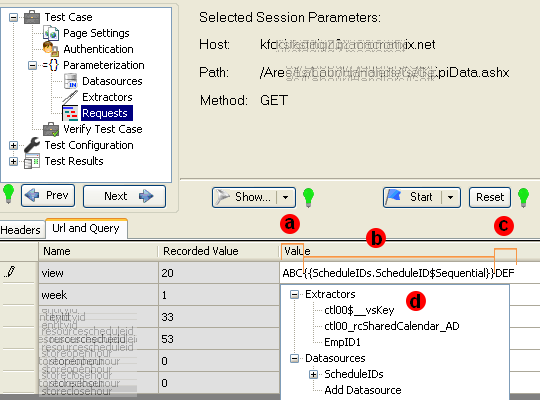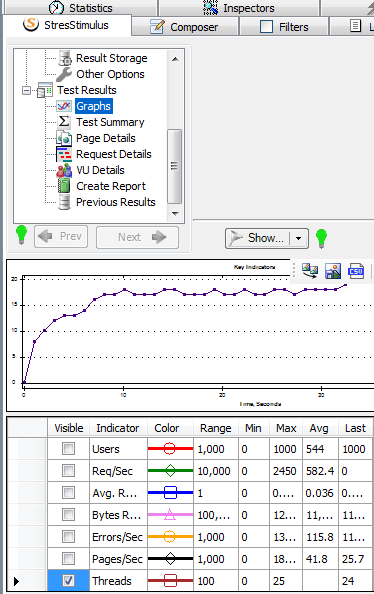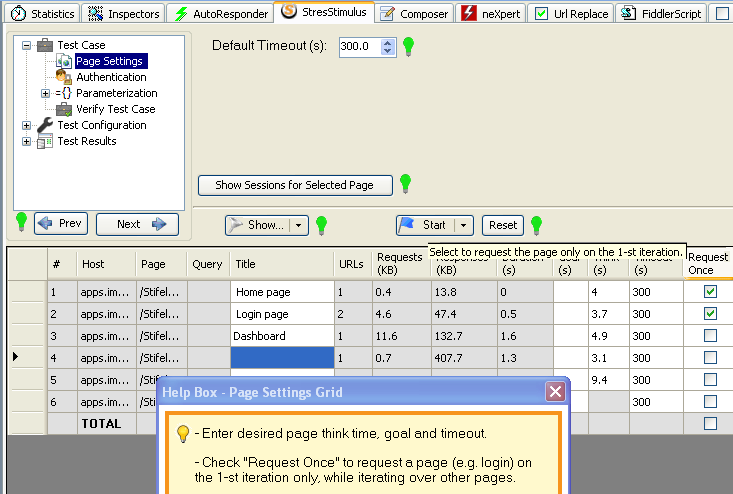Released today, V1.7 beta update added the following features and enhancements:
1. Changing any part of a value in the parameterization grid. Previously grid was used to parameterize name / value requests by changing the entire value, while changing a part of the value was not possible. In the current release you can change any part of a value in the parameterization grid. Furthermore, you can create a composite parameterization expression that combines any number of extractors, datasets and strings that will substitute the recorded value.
The screenshot below shows the example of creating a composite parameterization expression:
a. in the parameterization grid select field "view" and type the initial string "ABC";
b. right-click and in the appeared parameterization control select a data source, which will be appended after the "ABC";
c. type the second string "DEF";
d. right-click and select any data source or extractor.

2. Monitoring threads.A new graph displaying the number of threads is added to the Key Indicators graph.

System creates the necessary number of threads automatically, depending on the test complexity, the number of VUs and the test machine capacity. If you need to ramp up threads faster, which may be necessary when running large-scale tests on a high performance hardware, increase the "starting threads" value in Test Configuration -> Other Options -> Load Engine Performance. Then use this graph to monitor how your change impacted the thread dynamics.
3. Defining the initial actions in the test scenario.In some test scenarios, certain initial actions should be performed only once on the first iteration, while all other pages should be requested multiple times (per each virtual user). For example, if you want to simulate how a user logs-in and then performs repeated actions, the login pages should be executed only once before looping through other requests. To set the initial action pages, check the "Request Once" box in the Page Settings grid.

Often the requests issued during the initial actions create certain state that must be carried over throughout the entire test. For example, the login process generates a session ID that should persist throughout the test. To accomplish the state persistence, the following configurations in the Browser Cache section will be set automatically, when you check the "Request once" box:
- The Enable Cache Control box will be checked;
- VU restarting browsers % will be set to zero.
4. Improved integration with Fiddler's "Host Remapping". Previously, after changing the target host using the "Host Remapping" feature, the Fiddler grid displayed the recorded host.
In the new version, the Fiddler grid displays the new host that is actually targeted during the load test. This makes it easier to read the load test results.
v1.7 beta is available for download here.
Related Link: What's new in v1.7